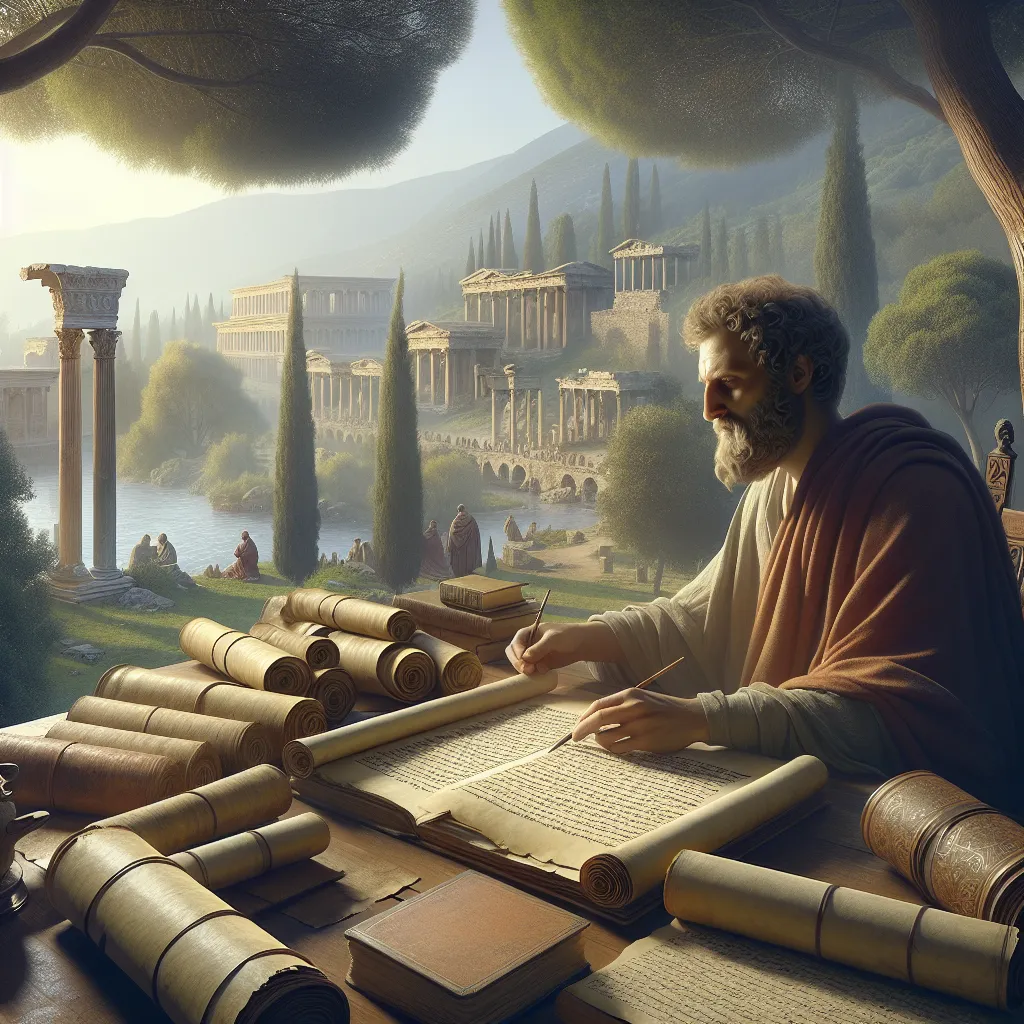Ask AI on The Internet
Question: the new testament got a lot of its theology from philo of Alexandria before paul and johns gopsel uses it while jesus was still supposedly a carpenter
The relationship between Philo of Alexandria and New Testament theology is a topic of significant scholarly debate and interest. Philo was a Hellenistic Jewish philosopher who lived in Alexandria, Egypt, around 20 BCE to 50 CE. His works were deeply influenced by Greek philosophy, particularly the writings of Plato and the Stoics, and he attempted to harmonize these philosophical ideas with Jewish theology. It's important to understand a few points regarding the connection between Philo and the New Testament: 1. **Philo's Influence and Context**: Philo's works were indeed influential in the Jewish diaspora, especially among Hellenistic Jews. He used allegorical interpretations to marry Jewish Scriptures with Greek philosophical concepts. This effort made certain ideas more accessible to a broader, non-Jewish audience. 2. **Hellenistic Influence on the New Testament**: Some of the New Testament writings, especially those attributed to Paul and the Gospel of John, do contain Hellenistic thought patterns and ideas that might remind us of Philo's approach. For example: - **Paul's Letters**: Paul's writings reflect a Hellenistic Jewish background. His theology often discusses concepts like the Logos (Word), which can be paralleled to Philo's use of Logos, although there are significant differences in interpretation and application. - **Gospel of John**: The Prologue of John (John 1:1-18) famously starts with "In the beginning was the Word (Logos), and the Word was with God, and the Word was God." This concept of the Logos bears some similarities to Philo's use of the term, but John's theological context is distinctly Christian. 3. **Independent Developments**: While similarities exist, it is also essential to acknowledge that many of the theological ideas in the New Testament could have developed independently within the broader Hellenistic culture in which early Christianity arose. Hellenistic Judaism, including but not limited to Philo, was just one part of the complex religious and philosophical environment of the time. 4. **Jesus' Historical Context**: The sayings and teachings of Jesus, as recorded in the Gospels, reflect a primarily Jewish context. The theological developments in Christianity that draw from Hellenistic ideas were mainly the work of later followers, particularly writers of the New Testament texts. 5. **Integration and Divergence**: Early Christians integrated Hellenistic concepts into their theology to communicate the message of Jesus to a broader audience, but they also diverged significantly in many respects. The Christian interpretation of the Logos as embodied in Jesus (the Incarnation), for example, is a unique development that goes beyond Philo's philosophical speculations. In summary, while Philo of Alexandria's writings and Hellenistic Jewish thought may have influenced some New Testament authors, especially in their use of certain philosophical concepts, the New Testament's theology also developed independently within the broader context of the Greco-Roman world. The primary source for New Testament theology remains the life and teachings of Jesus as interpreted by his followers in their unique religious and cultural contexts.
Think your answer is better than the AI's? Post it below.
Other Most Relevant Posts:
 Biblical Echoes: Unearthing the Hellenistic Influences of Greek Mythology and Philosophy in Scripture
Biblical Echoes: Unearthing the Hellenistic Influences of Greek Mythology and Philosophy in Scripture
 Ask AI: the bible copied alot of the much older surroundings pagan myths and re spun it's own yarn . it also uses a lot of plato
Ask AI: the bible copied alot of the much older surroundings pagan myths and re spun it's own yarn . it also uses a lot of plato
Question Tags
If you want your question answered by an AI, click here.





Post your own comment: